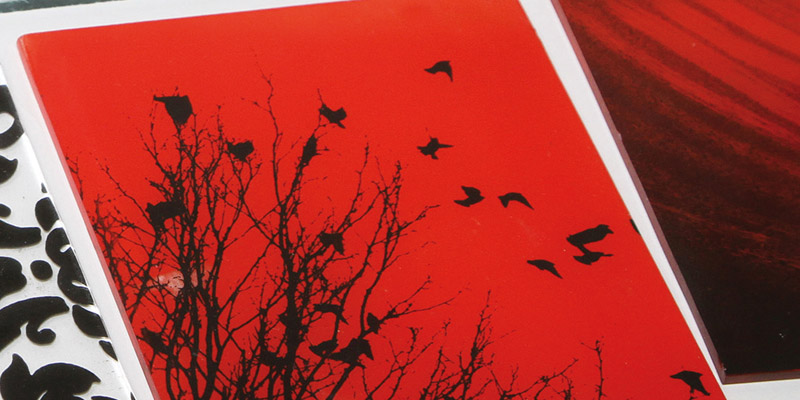The red in vitreous products is known for its special character. It has always been difficult to make a consistent red glass, those who mastered it tended to keep it secret.
Color Line offers 3 brilliant reds - 125 Carmine, 011 Red and 074 Lacquer Red - which luckily are easy to use and behave much less capriciously than many other red enamels, however, there are few things to note:
- Out of all Color Line products, Carmine, Red and Lacquer Red are the brightest in expression and shade. They are also the most difficult to get off your fingers and clothes. If you want to be on the safe side, wear old clothes and gloves when you work with these colours.
- Even though the pigmentation appears and in fact is very strong, you need to use a good amount of paint to have a strong registration after firing, this is especially true when you airbrush the colour.
- All Color Line Paints are freely mixable - including the reds. However, some mixes end up as a brownish/greyish shade after firing - looking very different from the unfired product. To be sure of your colour when mixing reds, we advise you to run some tests prior to working on a larger project.
- We have discovered that trying to obtain a light pink when mixing red and white is tricky. Based on the problems mentioned under point 2 the red colour tends to burn out, leaving you with the white only. In our testing we found that a ratio of 1 part red and 6 parts Mix White resulted in a pleasant pink.
- Reds like to be fired alone, i.e. fire the other colours before and add the red in a further separate firing. This is recommended to avoid too much medium being burnt off in the presence of red. When the medium in the paints burns off, oxygen is consumed and creates a reductive atmosphere in the kiln, which can influence the red colours.
- Finally, (and this is the solution to many firing problems), keep the kiln vent holes open during the firing. Especially the reds do not like the slightly reductive (oxygen poor) atmosphere you tend to have in any firing. By leaving the vent holes open, or the door slightly ajar, the kiln will draw in oxygen from outside and guarantee a neutral atmosphere and a stable and brilliant red.


